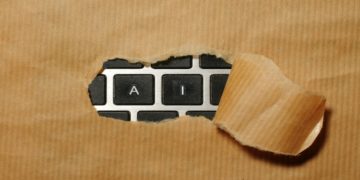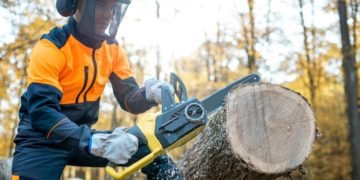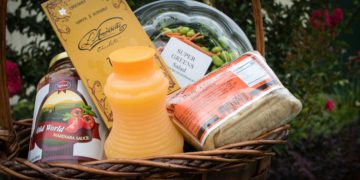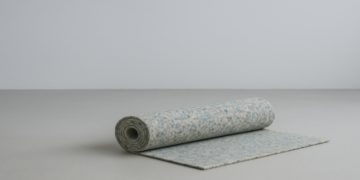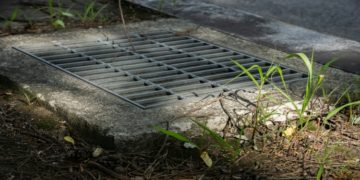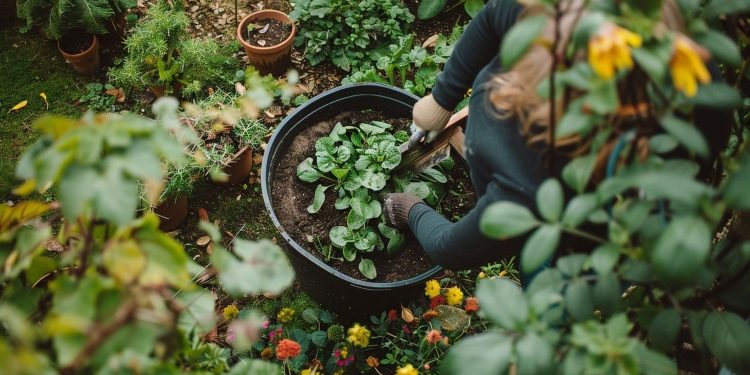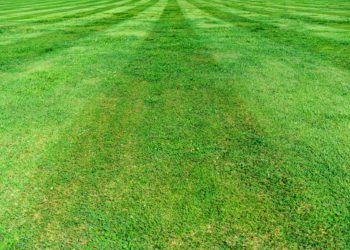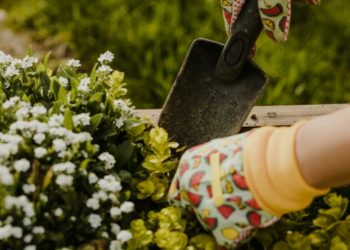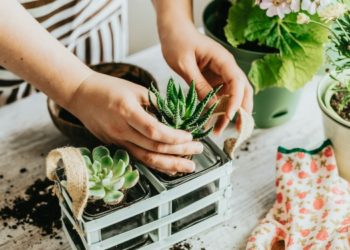Struggling with poor soil in your garden? Compost is the superhero, rich in nutrients and organic matter. Our guide shows you how to enrich your soil using a compost bin easily. Keep reading—your plants will thank you.Copy HTMLCopy text
Understanding Composting
Composting turns kitchen scraps and garden waste into rich soil food. It’s a simple process, using everyday waste to create something valuable for your garden.
What is Composting?
Composting is a way to turn kitchen waste, garden leftovers, and other organic materials into rich soil. It’s like recycling for nature. You pile up things like food scraps, leaves, and wood chips.
Over time, these items break down with the help of small life forms in the ground. This process makes compost. Compost adds important stuff to dirt that helps plants grow better.
To make good compost, you need a mix of green waste—stuff that is wet and has nitrogen—and brown waste—dry things high in carbon. Think about green as fresh veggie peels or grass clippings and brown as dry leaves or cardboard bits.
You layer them with some earth between. Keeping the right balance between wet and dry helps everything break down well without smelling bad or attracting unwanted animals.
How Composting Works
Composting turns kitchen scraps and yard waste into food for your garden. You mix green waste like vegetable peels with brown waste such as dead leaves. Add some soil to this mix. Microbes in the earth break everything down, turning it into nutrient-rich compost.
This process needs air, so you have to turn the pile now and then.
As things decompose, they get hot which helps kill seeds from weeds that might be in there. Keeping the right balance between wet and dry stuff is important too. Too much water stops air from getting in; not enough, and the microbes can’t do their job well.
With time, all these ingredients transform into something new – compost that feeds plants and keeps soil healthy without harming the planet.
Types of Composting
Making good soil is easy with composting. It turns kitchen scraps and garden waste into food for your plants. Here are the ways you can do it:
- Backyard Composting – This method is great if you have space outside. You just pile up brown and green waste, like leaves and veggie peels, in a corner of your garden. Over time, it breaks down into rich soil. You’ll need a fork or shovel to turn it now and then.
- Tumbler Composting – For those with less space, tumbler bins work well. They’re barrels that you can spin. This mixes your compost without needing a shovel, speeding up the process.
- Worm Composting (Vermiculture) – Worms eat through your kitchen waste, producing high-quality compost. You can do this in bins inside or outside your home.
- Bokashi Composting – This method ferments your waste using a special mix, working fast and even breaking down things like meat and dairy which you normally can’t compost. It’s done in a sealed container so there’s no smell.
- Hot Composting – Hot composting gets results fast because it creates temperatures high enough to break down waste quickly but needs careful balance of materials to keep the heat up.
- Green Waste Composting – You focus on composting garden trimmings like grass clippings and leaves mainly for this type, often seen in community gardens or councils offering green waste collection.
- Sheet Mulching – This involves layering different types of organic matter directly on the ground where you want to improve the soil — from newspapers to straw to green waste — letting them decompose in place.
- Trench Composting – If you want minimal fuss, dig a trench in your garden bed, bury your organic kitchen waste, and let nature do its work under the surface.
Each method suits different needs but they all make use of basic tools like buckets for collecting kitchen waste, forks or shovels for turning piles, tumblers for easy mixing, and sometimes specialised bins or worms for specific methods.
Why Compost? Benefits of Composting
Composting cuts down waste and enriches the earth. It makes plants grow better and keeps soil happy.
Reduces Waste
Using a compost bin means your kitchen scraps and yard trimmings don’t end up in landfills. This cuts down on methane emissions, which is good for our planet. It’s like making the earth healthier by just dealing with your waste smarter.
You turn leftovers from meals and garden clippings into something useful instead of adding to the heap of rubbish.
This smart way of handling waste helps lessen the need for chemical fertilisers too. By putting organic matter back into the soil, it makes a full circle—less stuff needs to be taken out because we’re using what we already have better.
And think about it, less rubbish means cities can manage what’s left more easily, making everything more efficient.
Improves Soil Health
Compost makes the ground better for growing things. It mixes macro- and micro-nutrients, organic matter, and decayed plants into the soil. This mix helps air get through the dirt and keeps water in, making a perfect place for roots to spread out.
Tiny living things in compost help break down dead plants without making it smell bad. They turn your garden waste into food for your plants. Adding cured compost to your garden boosts fertility.
It feeds helpful bugs that keep the ground healthy and ready for whatever you want to grow next.
Enhances Plant Growth
Using compost boosts plant growth amazingly. It packs the soil with macro- and micro-nutrients, all essential for plants to thrive. This nutrient-rich mix feeds your flowers and veggies, making them stronger and healthier.
The secret ingredient in compost is humus—it helps soil hold more water and air, creating a perfect environment for roots to spread out. With better soil structure and moisture levels, plants can absorb nutrients easily.
This results in lush gardens full of vibrant blooms and bountiful harvests.
Preparations for Composting
Getting ready to compost starts with picking a spot for your bin and gathering tools like shovels and gloves—read on to find out how.
Setting Up Your Compost Bin
Setting up your compost bin is easy and rewarding. It turns kitchen scraps and garden waste into rich soil for your plants. Here’s how to do it:
- Choose a spot for your bin. The place should be flat, well – drained, and easy to get to. You want to make it simple to add scraps and remove compost.
- Pick the right compost bin. There are many types – DIY bins made from spare wood, rotating barrels, worm farms, or Bokashi buckets. Think about the size of your garden and what you’ll compost.
- Gather materials for layering. You need green waste like vegetable peelings for nitrogen. Brown waste like dead leaves adds carbon. A balance of these makes great compost.
- Start with a layer of browns at the bottom of your bin – about three inches thick.
- Add a similar layer of greens on top.
- Sprinkle a thin layer of soil over the greens. This introduces microorganisms that help break down the waste.
- Repeat these layers until your bin is full, but leave some space at the top for air.
- Keep the pile moist, like a wrung – out sponge. Water it if it gets too dry.
- Mix or turn the pile every few weeks with a garden fork or shovel to add air and speed up decomposition.
- Rotate! If you have a barrel or tumbler bin, give it a spin every week to mix the contents well.
- Check temperature if you’re serious – use a compost thermometer to make sure it’s hot in there; heat helps with breaking down materials faster.
- Watch out for signs your compost is ready – it’ll look dark and crumbly and smell earthy, usually after 2-6 months depending on conditions and effort.
- Use your finished compost around the garden as mulch, potting mix additive, or natural fertiliser to nourish plants and improve soil structure.
Choosing the Right Location
Picking a good spot for your compost bin is key. You want a place that’s partly or fully in the shade. This helps keep the conditions steady for the tiny life forms turning waste into compost.
Make sure it’s also sheltered from too much wind.
Your bin needs to stay out of heavy rain but still be able to drain water away. It should get some air flow and hold onto heat as well. These things help your compost break down right, without any trouble from bad smells or unwanted animals.
Essential Tools for Composting
Composting turns kitchen and garden waste into rich soil. It’s a simple way to help plants grow better.
- Compost Bin or Pile: You need somewhere to put your scraps. A bin keeps things tidy, while a pile works if you have more space.
- Pitchfork or Garden Fork: This helps you mix your compost. Turning it gets air in, which speeds up the process.
- Watering Can: Moisture is key in composting. Keep your pile damp, but not too wet, with a good watering can.
- Shovel or Spade: Use this for moving compost around. You might need to transfer it or spread it in your garden.
- Gloves: Protect your hands from sharp items and keep them clean.
- Wheelbarrow: If your compost bin is far from your garden, a wheelbarrow makes moving compost easier.
- Secateurs or Scissors: Cut larger waste into smaller pieces to speed up decomposition.
- Thermometer: Check the temperature of your pile; warmth means it’s working right.
- Tarpaulin: Covering your pile can help control moisture and heat—important in cold or very hot weather.
- Aerator Tool – This special tool makes holes in the pile to let air in without turning it all over.
These tools make composting quicker and less of a chore, turning kitchen and yard waste into valuable food for your plants.
Different Types of Compost Bins
There are many compost holders out there, from simple homemade setups to fancy gadgets. Each kind has its own way of turning kitchen scraps and yard waste into garden gold.
DIY Compost Bins
Making your own compost bin is smart and saves money. You can build it to fit your space, using things like old pallets, wire mesh, or even a simple box. It takes some work but gives you control over size and shape.
Pick a spot that’s easy to reach, has good drainage, and gets some sun. This will help your organic waste break down faster.
For this project, you’ll need basic tools—a saw for cutting wood if you’re making a wooden bin; wire cutters for mesh bins; drill for holes. Start by stacking or assembling your chosen materials into a container shape.
Remember to mix green waste like vegetable scraps with brown waste such as leaves or newspaper strips in your new bin. Stirring it once in a while adds air and speeds up the process of turning scraps into rich soil for plants.
Tumblers
Tumblers are a type of composting bin that gardeners use to speed up the process. These bins turn kitchen scraps and yard waste into rich soil fast. They work well because you can spin them, which mixes everything inside.
This mixing adds air and keeps things from getting too wet or dry. Even though they cost more upfront, tumblers save time and effort.
These bins also keep pests away while turning food peels and leaves into plant food quickly. However, they don’t hold as much as other bins do. Being careful with extreme cold or heat is important because it affects how well they work.
Tumblers need a bit of space and some setup before starting but make recycling nutrients easy, even indoors.
Worm Composters
Worm composters turn kitchen scraps into rich soil. They work well inside and do not need much space. These bins use red wigglers to break down food waste like fruit peels, coffee grounds, and vegetable cut-offs.
You also add things like dry leaves and shredded paper to keep everything balanced. This type of composter is good for people who want to recycle nutrients without a lot of fuss.
These systems can be picky about the heat and cold, so keeping them in a spot that’s not too hot or too cold is key. Setting them up costs a bit at first, but they save money over time by making plant food from waste you would otherwise throw away.
Keep out wet stuff, big bones, and things that don’t break down like plastic or metal.
Bokashi Bins
Bokashi bins are a smart pick for speeding up composting. They can handle a variety of kitchen scraps, like meat and dairy, that you shouldn’t put in regular compost piles. This method is fast – it turns waste into compost in just two to four weeks.
Bokashi bins work by fermenting the waste first, which helps break it down quickly and keeps smells away. This makes them great for keeping inside.
They use a special mix full of microbes to get the job done. You add this mix to your scraps in the bin. Then, seal it up tight to start the fermentation. After a few weeks inside the bin, buried in soil or another compost mixture outside will finish off the process.
Using bokashi bins means you throw less away and turn more of your waste into food for plants.
Composting Process
Turning your kitchen scraps and garden waste into rich soil feeds your plants and saves the planet. Composting is simple—mix green stuff, like vegetable peels, with brown stuff, like dead leaves.
Keep it damp and turn it now and then. Soon, you’ll have black gold for your garden! Want to learn more? Keep reading!
What to Compost
Composting turns waste into treasure for your garden. It enriches the soil, making plants happy and healthy. Here’s what you can add to your compost bin:
- Kitchen scraps – Fruit and vegetable peelings, coffee grounds, and tea bags are great. They break down quickly.
- Yard waste – Fresh lawn clippings and green leaves provide nitrogen. Mix them well to speed up decomposition.
- Brown materials – Add old leaves, straw, and small branches for carbon. These items help create a balanced mix.
- Eggshells – Crush them before adding to help with soil minerals.
- Cardboard and newspaper – Tear into small pieces to avoid clumping. They absorb excess moisture.
Avoid meat, dairy, diseased plants, and pet wastes; they attract pests or harm your compost’s balance.
- Green materials include kitchen leftovers like salad leaves or apple cores.
- Brown items come from the garden — think twiggy prunings or autumnal leaves.
Always aim for a mix of greens and browns; this ensures quick composting without smell.
Never throw in plastic or glass—they don’t decompose.
Finally, turning your pile every now and then helps everything break down smoothly.
Green Waste: Nitrogen-Rich Materials
Green waste gives your compost the nitrogen it needs. This includes things like vegetable scraps, coffee grounds, and grass cuttings. Such materials are great for feeding the tiny organisms that break down the pile.
They’re quick to rot, adding vital nutrients back into the mix.
You can also throw in annual weeds before they seed, and animal manures—not from dogs or cats though—to boost microbial activity. These additions help create a rich environment inside your compost bin.
It’s all about getting that balance right between green waste and brown waste for perfect soil health.
Brown Waste: Carbon-Rich Materials
Brown waste adds the much-needed carbon to your compost mix. This includes dried garden plants, shredded newspaper, and small branches. It’s crucial for making rich soil that helps plants grow better.
Think of it as the dry, crunchy food for the tiny creatures breaking down your compost.
For a good balance, mix in cardboard and leaves if you’re short on brown stuff. This combination makes sure your compost doesn’t get too wet or smelly. Plus, adding sawdust can help, but not too much—just enough to keep things balanced.
This way, your garden gets all the nutrients it needs without any extra fuss or mess.
Items to Avoid in Your Compost
Composting turns kitchen scraps and garden waste into rich soil. Yet, not everything belongs in your compost bin. Here’s a list of items to skip:
- Meat, fish, and dairy products – These can attract pests and create bad smells.
- Diseased plants – They might spread illness in your garden.
- Invasive weeds – These could grow back from the compost.
- Non-biodegradable materials – Things like plastic won’t break down.
- Treated wood products – Harmful chemicals could leech into your soil.
- Produce stickers and treated papers or cardboards – They take too long to decompose.
- Meat scraps and grease – They’re likely to attract unwanted animals.
Adding the wrong items can ruin the balance needed for good composting. Stick to safe greens and browns to keep your compost healthy!
How to Start Composting
Starting a compost pile is easy and good for the planet. Here’s how you do it, step by step.
- Choose a compost bin that fits your space—whether it’s a small worm container for indoors or a big bin for your backyard.
- Find the perfect spot for your compost bin; ideally, somewhere easy to reach yet out of direct sunlight.
- Gather essential tools: a pitchfork or garden spade for turning the compost, and gloves to protect your hands.
- Collect “green” waste—like vegetable skins, coffee grounds and grass clippings—for nitrogen.
- Add “brown” waste—such as dry leaves, paper and cardboard pieces—for carbon.
- Keep a balance: aim for roughly equal amounts of browns to greens to support microbes that break down materials.
- Avoid items like meat scraps, dairy products, and oils which can attract pests and cause bad smells.
- Shred larger pieces to speed up the decomposition process; smaller items decompose faster.
- Layer your greens and browns in the bin, starting with browns at the bottom for better air flow.
- Keep the pile moist like a wrung – out sponge—not too wet or too dry.
- Mix or turn your pile every few weeks with your fork or spade to add oxygen and distribute moisture evenly.
This method balances materials in your pile, aiding microbes and soil organisms that break down organic matter into rich compost. Also, mixing helps prevent unpleasant smells from anaerobic activity by keeping things aerobic instead.
Remember not to let any sentence start with banned words or fall into overly complex language; keep instructions clear and straightforward!
Layering Your Compost
Layering your compost is like making a garden lasagne. Each layer plays a crucial role in breaking down scraps into rich soil. Here’s how to do it right:
- Start with a layer of brown materials. These are your dry leaves, straw, and small twigs. They add carbon, which fuels the organisms that break down the waste.
- Add a layer of green materials on top of the brown layer. Think kitchen scraps, grass clippings, and coffee grounds for this part. Green layers provide nitrogen — vital for composting.
- Sprinkle a thin layer of soil over the green materials. Garden soil works fine here. It introduces beneficial microbes that speed up decomposition.
- Repeat these layers until your bin is full, aiming for equal parts green and brown materials by volume.
- Keep an eye on moisture levels. The mix should be as damp as a wrung – out sponge.
- Make sure there’s enough air in your pile by turning it every few weeks with a garden fork or shovel.
Remember:
- Chopping up larger pieces speeds up composting.
- A balance between green and brown layers keeps odors away and ensures quick decomposition.
- Turning the pile adds oxygen, which is crucial for breaking down materials aerobically.
Layering is simple but needs attention to detail to get rich compost perfect for gardens and potting mixes without attracting pests or creating bad smells.
Maintaining the Right Balance
Getting the right mix of green and brown matters is key. Green items, like vegetable scraps or coffee grounds, add nitrogen. Brown stuff, such as dried leaves or paper, brings carbon to your pile.
This mix helps tiny organisms in the soil break down the compost faster and keeps smells away.
Turn your compost regularly to spread heat and speed up breaking down. If you’ve got lots of kitchen waste or lawn cuttings, balance them with cardboard or woody stems. Too much water? Throw in dry leaves or shredded newspaper to soak it up.
Not wet enough? Add some water lightly with a watering can until it feels moist like a wrung-out sponge. Simple steps make a big difference for healthy compost and plants.
Moisture and Aeration
Compost piles need the right mix of wetness and air. Too much water, and your compost may start to smell because it lacks oxygen. Not enough water, and the decomposition slows down.
Aim for your compost to feel like a wrung-out sponge—moist but not dripping.
Turning your compost pile helps add oxygen that speeds up decay. Use a garden fork or a compost aerator tool for this job. Arrange stiff plant stems in a cross-hatch pattern at the bottom to improve airflow from the start.
This keeps your soil helpers—worms and tiny bugs—happy and active in breaking down material faster.
Using Your Compost
Once your compost turns into rich soil, you’re ready to help your garden thrive. Spread it around plants or mix with potting soils for healthier, happy plants indoors and out.
Knowing When Your Compost Is Ready
Check your compost to see if it’s ready. Look for a dark brown, crumbly texture that feels like soil. This shows it’s mature and good to use as mulch or potting mixture. If it smells earthy and not bad, that’s another sign it’s done.
Compost can be quick; sometimes just two weeks is enough.
Use your compost in the garden when these signs show up. It boosts plant growth by making the soil richer and better at holding water. Your veggies and flowers will love this natural feed, making your gardening more eco-friendly by cutting down on waste.
How to Use Compost in Your Garden
Spread your compost around trees, flowers, and veggies to make them grow better. It’s full of good stuff that helps the earth in your garden hold more water and breathe better. This means you won’t need as many shop-bought plant foods that can cost a lot and harm the planet.
Just put a thin layer on top of the soil or mix it in when you’re planting something new.
You can also make a liquid food for your plants with your compost. Mix some with water and let it sit for a while. Then, use this “compost tea” to give your plants a boost, especially those in containers or needing extra care.
It’s like making dinner for them – simple but very helpful for their health and growth.
How to Use Compost in a Greenhouse
Mix your compost into the soil before you plant anything in your greenhouse. This helps make the dirt richer, giving your plants a strong start. You can also use it as a top layer around existing plants to help them grow better.
Keep an eye on how wet the soil is and add more compost if it looks like it’s drying out too quickly.
For pots and containers inside the greenhouse, replace some of the regular potting mix with compost. This makes sure your indoor greens get plenty of nutrients. Whether starting seeds or repotting flowers, adding this homemade nutrient-rich material gives them an extra boost, helping everything from vegetables to houseplants thrive in their cosy greenhouse home.
How to find and buy a Greenhouse
To find a greenhouse, start by checking out garden centres or online stores. Look for Halls Greenhouses, known for quality and variety. Think about what size you need based on your garden’s space.
Small or big, there’s something for everyone. Consider the type too—do you want a simple lean-to or a larger structure? Materials matter as well; glass lets in more light but polycarbonate panels are tougher.
For buying, compare prices online and in local shops to get the best deal. Don’t forget to check reviews to see how others liked their purchase. Sometimes, used greenhouses are available at lower prices but make sure they’re in good condition before buying.
Once chosen, order it directly from the seller or pick it up yourself if possible. Setting up might require some tools and help from friends or family.
Advanced Composting Tips
Even if your space is small, you can still master composting. Winter doesn’t stop the process—learn how to keep it going.
Composting in Small Spaces
Small spaces don’t mean you can’t compost. In fact, worm bins and bokashi bins are perfect for tiny gardens or even indoors. Worm bins use worms to break down food scraps into rich soil.
Bokashi bins ferment waste anaerobically, speeding up the process without bad smells. Both fit under sinks or in corners, making them great for small areas.
To fill your bin in a compact space, mix shredded paper with kitchen leftovers like veggie peels and coffee grounds. This balances “brown” carbon stuff with “green” nitrogen scraps—key for good compost.
Keep an eye on moisture and stir once in a while to let air in. You’ll turn waste into garden gold without needing much room at all.
Winter Composting
Composting doesn’t stop when winter arrives. Cold weather slows the breakdown process, but you can still add leftovers to your compost pile. To keep animals away, cover kitchen scraps with a thick layer of browns like fallen leaves or shredded newspaper.
This keeps the pile from smelling too tasty to wildlife.
In colder months, it’s key to balance green and brown waste in your compost bin. Greens are things like vegetable peelings, and browns are dry materials like twigs or dead plants. Mixing these well helps your compost stay active, even when it’s chilly outside.
If you’re worried about slow decomposition, remember that patience pays off with rich soil for spring planting.
David Prior
David Prior is the editor of Today News, responsible for the overall editorial strategy. He is an NCTJ-qualified journalist with over 20 years’ experience, and is also editor of the award-winning hyperlocal news title Altrincham Today. His LinkedIn profile is here.




